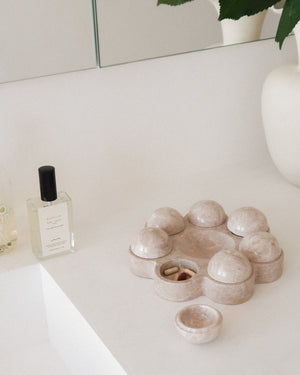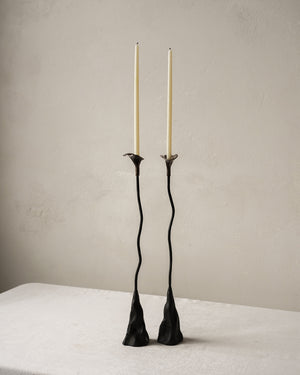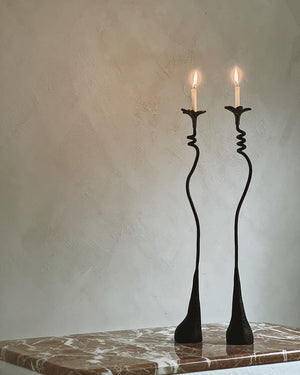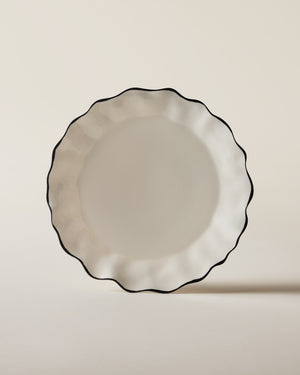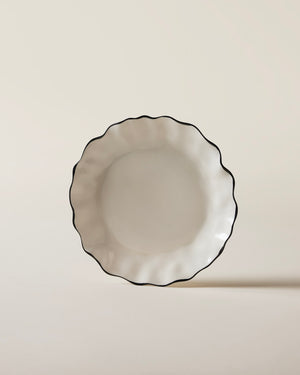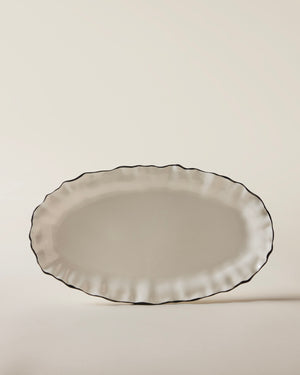REIMAGINING THE PAST

By Savannah James
We recently had the opportunity to shoot our new collection at 18 Prospect Park West, a Neo-Renaissance Italian-style mansion designed by architect Montrose Morris. The regal interior of the home has since been restored which we saw as the perfect complement to our launch 'Ancient Ceramics Reimagined' with one-of-a-kind pieces by Peruvian artist Gianfranco Briceño and Italian Sculptor AnnaleaClelia Tunesi.

|
Giara |
Alrata |

History of the Home
Built in 1898, along with its nearly identical neighbor, 19, 18 Prospect Park West was commissioned by lumberyard giant, Sylvester Ross. At the time, the City of Brooklyn was in the midst of an industrial boom. What was once swamp and farmland had quickly become prime real estate for wealthy industrymen and financiers. They began buying up property and building individual mansions alongside the then-brand-new Prospect Park, which was designed by Central Park’s Frederick Law Olmsted and Calvert Vaux.
18 Prospect Park West is larger than its counterpart and marked with a copper awning– a special detail to distinguish what would’ve been the Ross family home. Unfortunately, the fraternal mansions were only completed after the death of Ross’s wife. Ross ended up moving into 19 instead, selling 18 to a Manhattan businessman. Since, the home has passed through the hands of many, and is now reentering the market for $13 million.

|
Amphora IV |
Full Moon Jar Perseu |

Reimagining the Past
For its market debut, 18 Prospect Park West was staged by the founder of Staged to Sell, a boutique home-staging firm based in New York City, Jason Saft. For this project, Saft aimed to recontextualize the house’s ornate, turn-of-the-century details it’s treasured without taking away from its decadence. Notable features Saft sought to highlight were the pristine coffered ceilings, the oak staircase with hand-carved railings, and stained glass windows. “The rounded sofas in the front parlor mimic the ceiling moldings, the green stone. The views of Prospect Park influenced the choice of rugs, while the cream and ivory furniture give a sharp contrast to the moody wood paneling and carvings in the center parlor,” Saft said of his choices.
Our team was inspired to respond to the 18 Prospect Park West’s Neo-Renaissance interior as well as Saft’s modern uplift. The earthiness and enigmatic essence of Briceño and Tunesi’s pieces starkly contrast the dark wood that runs through the house, drawing attention to its overall grandeur. Equally, the mansion’s original refined design work set a beautiful stage for our shoot. The sculptures disrupt the symmetry of the space, asking viewers to take a closer look at the details of the artwork. A natural exchange is created between object and space; the decadence of 18 Prospect Park West shines just as brightly as the brilliant craftsmanship of each sculpture.

Briceño’s and Tunesi’s works alone exhibit the timelessness created when the corners of time are brought together. When placed in the quarters of 18 Prospect Park West alongside Saft’s vision, it truly feels like a celebration of artistry that surpasses any historical context. Both artists look to classical antiquities for inspiration, yet leave space for something new to come through in their creative processes. Each work sparks a conversation where past and present come alive, while simultaneously leaving a seat at the table for the future.
For Briceño, his ceramics are not just stand-alone art pieces but are also props in his photography and video work. The videos, which are like short art films, include male models posing with his ceramics and are overlaid with Beethoven compositions or 1960s bossa nova tracks. Ultimately, the sculptures become part of a broader context that reaches into multiple cultural timelines. In the setting of 18 Prospect Park, his sculptures seem to dance in their whimsy, creating an almost ambiguous air in an otherwise refined environment.
Tunesi’s work has a similar effect. Her practice is informed by her background in art history, specifically that of a dissertation she did on 19th-century antiques dealer, Stefano Bardini. Her ceramics are, in a way, an ode to artifacts. They’re composed of various materials, sometimes including fragments of vessels from the Renaissance or ancient Rome. She calls her pieces ‘contemporary archaeology,’ as their earthiness and abnormal forms make them look as if they’ve been excavated from an archaeological site. “They seem appropriate in a home rooted in the past,” Saft says of the pieces we chose for 18 Prospect Park. “They make the home feel more recent when you think of the time periods in which her pieces seem to have originated in– B.C.”

|
Dancing Giara II |
Hermes Vessel |

